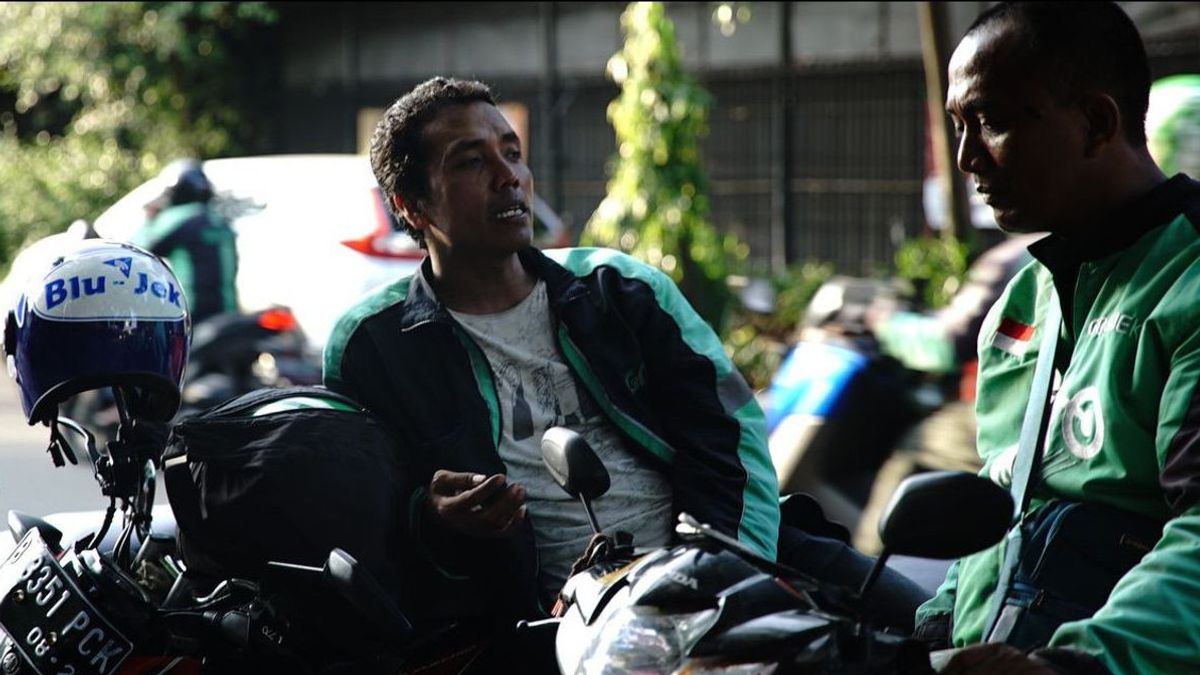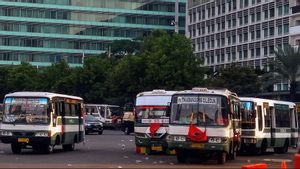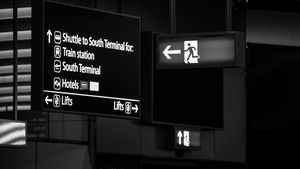JAKARTA - Nowadays, traffic jams have become a specialty of Jakarta. In the midst of these conditions, one that is popularly used lately is motorcycle taxis, both conventional and online.
Especially for the second one, the convenience provided by online motorcycle taxi service providers is somewhat revolutionary. Only with a smart phone, then ordering via the application, the ojek also came to pick up, ready to take passengers through traffic jams in Jakarta.
If you look back, the phenomenon of ojek services to break through the streets of the Capital City has been around for ages. Motorcycle taxis have been famous for a long time, to be precise starting in the 1960s.
As revealed by Kasijanto Sastrodinomo in his writing in Tempo Magazine entitled Hikayat Ojek Engkong Pe'i (2018), the term ojek comes from the Betawi language, or at least popularized by the Betawi people, before it spread to all corners of the country.
"The word ojek is a pun on ngobjek, a form of object or object, which means 'looking for money.' Such a line of thought can be seen in the derivative word, mengojekkan, which means 'to make an ojek.' It makes sense, especially if it is related to the example sentence in the Big Indonesian Language Dictionary (KBBI): he also earns quite a bit from driving his motorbike. "
In another view, the term ojek is also claimed to have originated from West Java. That's because the word 'ojeg' is an abbreviation of two words that come from Sundanese, 'oto' means car, while "jegang" means straddling.
If interpreted to mean "a car driven astride." The term is not really meant for cars, but rather, for other vehicles, such as motorbikes or bicycles.
If you look at existing literacy, the word ojek is first pinned to those who use pedals - not motorbikes - to attract passengers and goods. That too is only a part time job, not as the main coffers of daily income.
Quoted from the Kompas newspaper (1979), in 1969, bicycle taxis had developed in rural areas in Central Java. The existence of the ojek was driven by the badly damaged condition of the village roads, so that cars could not pass. Seeing this, people in the village had the idea of offering ojegs to villagers who wanted to break through the damaged roads. "At that time the bicycles used were none other than the tough-built bicycles of the pre-World War II era."
In Jakarta it is the same. Initially, bicycle taxis appeared in 1970 at Tanjung Priok Harbor. His presence was allegedly because at that time there was a prohibition against bemo, rickshaw and others from entering the port. Based on that, people who have bicycles then offer their services.
After that, motorcycle taxis began to dominate the existing streets so that they had various bases in many places. In the writings of Zaim Ucrowi and Yopie Hidayat in Tempo Magazine entitled Karyudi and his Beloved Bicycle (1989). In this article, the author reports a Jakarta resident named Karyudi who works as a motorcycle taxi driver. At that time, the existence of motorcycle taxis was competing with motorbike taxis.
"Karyudi kawula alit in Jakarta, his living capital is bicycles. He is a motorcycle taxi driver. This is perhaps the only city where bicycle taxis are still operating. In other places, even in remote areas, the world of ridicule, as is known, has been controlled by motorbikes, ojeg is not an old thing. Of course, it is not as old as the rickshaws, ”he wrote.
Motorcycle taxi drivers are becoming increasingly popularAlong with the increasing number of motorcycle taxi drivers using motorbikes in the 1970s, the profession as an ojek driver began to look promising and was considered a means of seeking fixed income coffers. The proof is that motorcycle taxi businesses have begun to develop in the capital city. One of them was a motorcycle taxi business that was present in Ancol, North Jakarta in 1974.
On the basis of new transportation, there are quite a lot of fans. So, passengers can simultaneously ride a motorbike around Ancol accompanied by a motorcycle taxi driver. Even more famous, because his profession as a motorcycle taxi driver began to perch on the big screen film by Nawi Ismail entitled Sama Gilanya (1983).
In the film, an eccentric girl named Euis, played by Euis Darliah, tells the story. Euis has been betrothed to a young landlord by his parents. Unfortunately, Euis has already been attracted to an eccentric ojek driver named Beno, played by the Betawi acting legend, Benyamin Sueb.
In one scene, Euis, who wants to participate in the audition, becomes a singer who is rushing to find a ride by a motorcycle taxi driver. Long story short, met Beno himself. There Euis asked: "Do you want to be interesting?"
Beno also answered "where are you going? Invitation?"
Euis then answered "Wow, want to sing along, let me enter TV."
Beno, who heard it then joked, “Get on TV, load you up? Like a cockroach. Come up. Penglaris, selling well! "
Then, Beno offers a helmet for Euis to use. "Use this, to maintain the safety of your head, if you fall, don't drag you. This government regulation.
After that comes the most iconic part of the film. When he wanted to blame the motorbike, Beno's motorcycle exhaust then flew and landed on the meatball seller. Not surprisingly, this incident often brought laughter.
Thanks to that, the memory of the film and funny acting legends of the Betawi acting from Kemayoran is still lingering in the minds of many people. Uniquely, this film is also proof that motorcycle taxis are not only popular since the existence of various online motorcycle taxi applications. Rather, it has been famous for a long time.
The English, Chinese, Japanese, Arabic, and French versions are automatically generated by the AI. So there may still be inaccuracies in translating, please always see Indonesian as our main language. (system supported by DigitalSiber.id)










